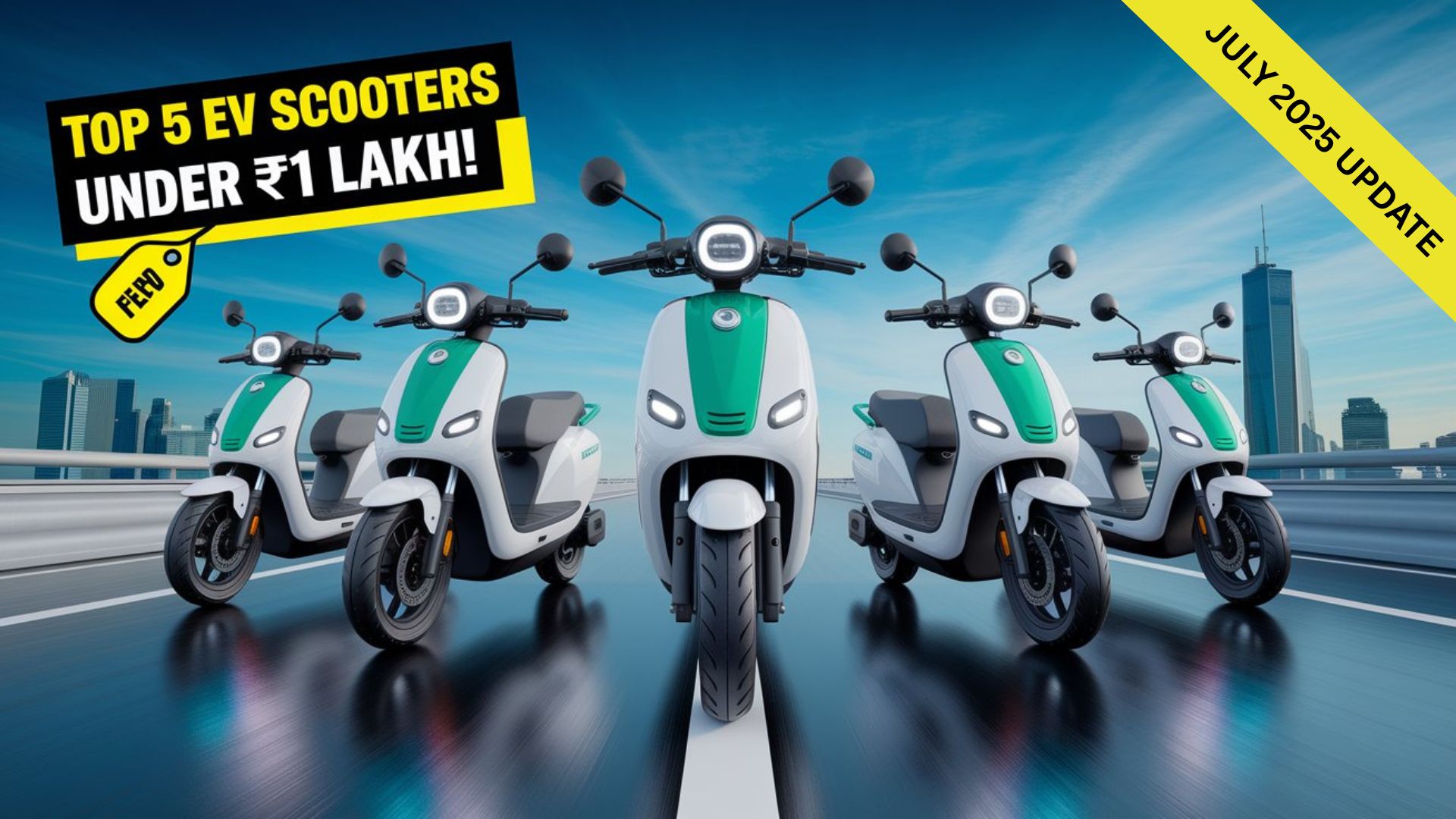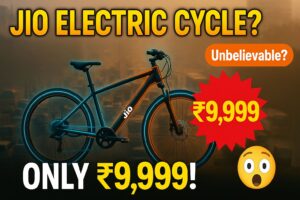Your Ultimate Guide to Affordable Electric Scooters in India (July 2025)
India is currently experiencing a profound shift in its transportation landscape, with electric vehicles (EVs) rapidly gaining traction. This surge is driven by a confluence of factors, including increasing environmental consciousness, the persistent rise in fossil fuel prices, and robust government support. Within this evolving ecosystem, electric two-wheelers have emerged as a particularly compelling solution, offering a sustainable, cost-effective, and increasingly popular alternative for daily commuting across both urban and semi-urban environments.
Table of Contents
The segment of electric scooters priced under ₹1 lakh holds significant importance, as it represents a crucial entry point for a vast number of Indian consumers. This price bracket strikes a delicate balance between affordability and practical performance, making electric mobility accessible to a broader demographic who are keen to embrace sustainable transport without a substantial initial investment.
The electric scooter market in India is dynamic, characterized by continuous advancements in models, technological innovations, and, critically, evolving government subsidy policies. This comprehensive guide is meticulously crafted to provide the most current and relevant information for July 2025. It aims to equip prospective buyers with all the essential facts, from the latest subsidy updates to realistic real-world performance figures and candid user experiences, empowering them to make a confident and well-informed purchase decision.
Navigating EV Subsidies in India: The July 2025 Landscape
The landscape of electric vehicle incentives in India has undergone significant transformation, particularly with the transition from the FAME-II scheme to the new Electric Mobility Promotion Scheme (EMPS) 2024. Understanding these changes is crucial for any buyer looking to maximize their savings in July 2025.
FAME-II’s Evolution: Understanding the Shift to EMPS 2024
The Faster Adoption and Manufacturing of Electric Vehicles (FAME-II) scheme was a cornerstone government initiative designed to accelerate EV adoption across India through direct financial incentives. This scheme offered substantial subsidies, reaching up to ₹15,000 per electric two-wheeler or 15% of the vehicle’s ex-factory cost. This support played a pivotal role in making electric scooters more affordable for a wide consumer base.
However, the FAME-II subsidy officially concluded on March 31, 2024. To ensure a seamless continuation of support for the rapidly growing electric vehicle market, the government subsequently introduced the Electric Mobility Promotion Scheme (EMPS) 2024. This new scheme aims to uphold the objectives of FAME-II, albeit with revised incentive structures.
EMPS 2024: How the ₹10,000 Subsidy Works for 2-Wheelers
Under the EMPS 2024, eligible electric two-wheelers now receive a flat subsidy of ₹10,000 per vehicle. This represents a shift from the percentage-based subsidy offered under FAME-II. A significant convenience for buyers is the claiming process: unlike FAME-II, there is no requirement for buyers to submit a separate subsidy claim form. Instead, the incentive is directly disbursed to the manufacturers, and this amount is then reflected as a deduction in the final purchase price at the dealership.
It is important for prospective buyers to verify that the electric scooter they intend to purchase is offered by an Original Equipment Manufacturer (OEM) that has been certified by the Ministry of Heavy Industries (MHI) under this revised incentive structure. The scheme is broad in its applicability, extending benefits to both commercial and privately owned registered electric two-wheelers.
A critical update for buyers in July 2025 is the duration of the EMPS 2024 scheme. Initially, the scheme was planned for a four-month period, from April 1, 2024, to July 31, 2024. However, the government has extended this scheme by an additional two months, meaning it will now run until September 30, 2024. Furthermore, the total financial outlay for the scheme has been enhanced to ₹778 crore, up from the initial ₹500 crore, indicating continued governmental commitment to fostering EV adoption.
The transition in subsidy mechanisms, particularly the shift from a more substantial FAME-II incentive to the EMPS 2024’s flat rate and its initial short duration, followed by a brief extension, has introduced a degree of policy unpredictability. This short-term, reactive approach to subsidies can make consumers hesitant to commit to a purchase, as they might be concerned about the subsidy ending abruptly or being further reduced, which would directly impact the perceived long-term value of their investment. Such fluctuations can lead to inconsistent market growth, with potential spikes in sales just before a scheme’s expiry, often followed by slowdowns. For a buyer considering an electric scooter in July 2025, the ₹10,000 subsidy is only guaranteed for a few more months, and the absence of a clear, multi-year subsidy roadmap makes financial planning for EV ownership less predictable.
The central government’s strategic move from significant direct purchase subsidies under FAME-II to a more modest, flat incentive under EMPS 2024 is indicative of a broader shift in strategy. Concurrently, the Union Budget 2025-26 demonstrates a substantial increase in funding directed towards charging infrastructure through the PM E-Drive Scheme, and it actively incentivizes domestic manufacturing of EV components through Production Linked Incentive (PLI) schemes and customs duty exemptions on critical lithium-ion battery raw materials. This policy direction suggests a long-term vision where the government aims to make EVs inherently more affordable by cultivating a robust domestic manufacturing base and a pervasive charging infrastructure, rather than relying on perpetual direct consumer subsidies. While this approach is beneficial for the sustainable growth of the EV industry, it implies that the immediate financial savings for buyers in July 2025 from central subsidies are less pronounced compared to previous years.
Beyond Central Schemes: State-Level Incentives and Future Policy Outlook
Beyond the central EMPS 2024, several state governments in India continue to play a crucial role in promoting EV adoption through their own distinct policies. For example, the Maharashtra EV Policy 2025 has allocated a substantial ₹1,993 crore over five years, offering additional benefits such as exemptions from road tax and registration fees, and even toll-free travel on select expressways for electric vehicles. These state-level incentives can significantly enhance the overall affordability of electric scooters.
Given the modest and time-limited nature of the central EMPS 2024 subsidy, these additional incentives provided by state governments become highly influential in a buyer’s decision-making process. State-specific benefits, which can include road tax exemptions, registration fee waivers, and even toll-free travel, can considerably reduce the overall cost of ownership. This means that the true affordability and attractiveness of an electric scooter priced under ₹1 lakh can vary significantly depending on the state of purchase. Therefore, buyers are strongly advised to investigate and factor in these state-specific policies to maximize their financial benefits, as they can represent a substantial portion of the overall savings.
The Union Budget 2025-2026 further signals a strategic commitment to the EV ecosystem. It includes a massive 114% increase in funding for EV charging infrastructure under the PM E-Drive Scheme. Furthermore, the budget emphasizes domestic manufacturing through Production Linked Incentive (PLI) schemes for automotive components and batteries, along with customs duty exemptions on critical lithium-ion battery raw materials. These measures are designed to reduce India’s reliance on imports and make EVs inherently more affordable in the long run.
EMPS 2024 Subsidy at a Glance (July 2025)
| Feature | Details (July 2025) |
| Scheme Name | Electric Mobility Promotion Scheme (EMPS) 2024 |
The Contenders: Top 5 Electric Scooters Under ₹1 Lakh (July 2025)
The “under ₹1 lakh” segment for electric scooters in India is highly competitive and fluid. It is observed that multiple “top 5” lists and price points exist across various sources. This variability underscores the dynamic nature of this price-sensitive market, where even a slight adjustment in ex-showroom price or the introduction of a specific variant can alter a model’s eligibility for this category. For consumers, this means that while a curated list provides an excellent starting point, it is always prudent to confirm the most current on-road prices.
Furthermore, it is important to understand that for popular models from major manufacturers like Ola, TVS, and Bajaj, the prices listed under ₹1 lakh consistently correspond to their entry-level or base variants. These variants typically feature smaller battery capacities, which directly influence the available range, and may also lack some of the advanced features found in their higher-priced counterparts. Therefore, prospective buyers should maintain realistic expectations regarding the performance and feature set of scooters within this budget. While these models offer exceptional value, they may not deliver the same extensive range or premium features as more expensive variants. This report aims to highlight these trade-offs transparently to ensure buyer satisfaction and prevent potential disappointment.
To facilitate a quick and comprehensive overview, the following table compares the top contenders in this segment for July 2025:
Top 5 Electric Scooters Under ₹1 Lakh: Quick Comparison (July 2025)
| Model | Price (Ex-showroom, July 2025) | Battery Capacity | Claimed IDC/ARAI Range | Real-World Range (Estimated) | Top Speed | 0-40 kmph Acceleration | Charging Time (0-80%) | Key Features | Pros (from reviews) | Cons (from reviews) |
| Ola S1 X 2 kWh | ₹73,999 | 2 kWh | 108 km (IDC) | 78-100 km | 101 kmph | 3.4 seconds | 4h 50m | 3 ride modes (Sports, Normal, Eco) | Smooth ride, stylish, low maintenance | Software glitches, poor service, range degradation, no extended warranty |
| TVS iQube | ₹94,434 | 2.2 kWh | 94 km (IDC) | 59-76 km (Eco/Power) | 75 kmph | 4.2 seconds | 2h 45m | 5-inch TFT display, reverse mode, smart display | Solid build, comfortable, reliable DTE, good suspension, positive service | Aggressive regen, delayed throttle, motor overheating, buggy app, no fast charging |
| Ola S1 X 3 kWh | ₹97,999 | 3 kWh | Not specified (IDC for 2kWh is 108km) | ~136 km (Eco) | 115 kmph | 3.1 seconds | Not specified | 7-inch touchscreen, digital key, 3 ride modes | Higher performance than 2kWh model | Software/service issues (similar to 2kWh), features potentially behind subscription |
| Bajaj Chetak 2903 | ₹98,498 | 2.9 kWh | 123 km | 85-140 km | 63 kmph | Not specified | 4 hours (0-80%) | Hill hold, LCD digital cluster, Bluetooth, 211L boot space | Durable metal body, comfortable, stylish design, trusted brand | Poor service experience, battery issues, firm suspension, limited storage |
| Hero Vida V2 Lite | ₹74,000 | 2.2 kWh (removable) | 94 km (IDC) | 60-70 km (user reported for V1 Plus) , ~15% drop from IDC | 69 kmph | 4.2 seconds | 3h 30m (0-80%) | 7-inch TFT display, 2 ride modes, 26L boot space, removable battery | Removable battery, fresh design, good comfort | Range discrepancy, charging issues, water seepage in storage, poor after-sales |
(Note: The following detailed breakdowns for each scooter primarily use data from Financial Express as the most current “Top 5” list for May 2025, supplemented by other snippets for real-world range, user reviews, and service information.)
3.1. Ola S1 X 2 kWh
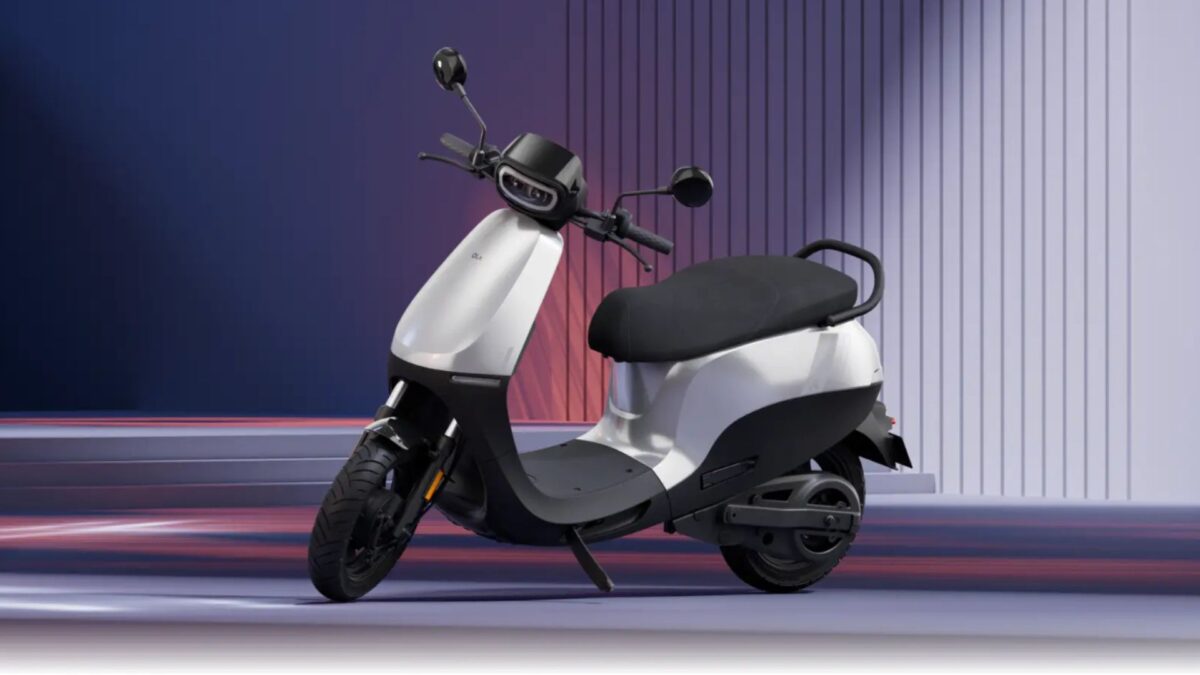
The Ola S1 X 2 kWh is positioned as an accessible entry into the Ola Electric lineup, offering a blend of performance and features at a competitive price point.
Official Specifications & Unique Features: This variant is priced at ₹73,999 (ex-showroom). It is equipped with a 2 kWh battery pack and delivers a power output of 9.3 bhp. The scooter boasts quick acceleration, reaching 0 to 40 kmph in a swift 3.4 seconds. Ola claims an Indian Driving Cycle (IDC) range of 108 km and a top speed of 101 kmph. For diverse riding conditions, it offers three distinct ride modes: Sports, Normal, and Eco. Charging from 0% to 80% takes approximately 4 hours and 50 minutes.
Real-World Range Insights: While Ola officially claims a range of 91 km for the S1X 2kWh model , user experiences suggest that the practical real-world range typically falls between 80-100 km, heavily influenced by individual riding style and prevailing conditions. More specific real-world testing for the S1X 2kWh indicates a true range of approximately 78 km. This difference between claimed and actual range is a common point of discussion among users and is an important consideration for potential buyers.
User Reviews: The Good, The Bad, and The Glitches: Users often commend the Ola S1 X for its smooth and comfortable riding experience, stylish design, and its suitability for daily commutes, highlighting its relatively low maintenance requirements. However, a persistent and significant concern among users is the prevalence of software glitches and reliability issues. Reports frequently mention the screen suddenly turning off, the system becoming unresponsive for periods of 10-15 minutes (sometimes requiring a manual intervention like pulling a plug from the boot space to reset), and persistent Bluetooth connectivity problems. The sentiment that “buying Ola means you have to rely on luck if it works then you’re good to go” encapsulates a common frustration regarding the scooter’s operational consistency.
Ola’s after-sales service is another area that frequently draws criticism. It is often described as poor, with users reporting infamous long resolution times, unresponsiveness, and instances where service stations allegedly charge for their own mistakes. Some owners have recounted needing multiple visits to service centers for recurring problems. Furthermore, some long-term owners have observed a noticeable and drastic decline in battery range after two years of ownership. General quality control issues have also been raised by a segment of users. A critical detail for the S1 X 2kWh model is its explicit ineligibility for Ola’s extended top-up battery warranty plans , which could pose a significant concern for long-term battery health and potential replacement costs.
Service Network: Ola Electric is actively expanding its service infrastructure, boasting a rapidly growing network of over 500 Ola Electric Stores across India. The company has ambitious plans to double its service network to 1000 centers by December 2025 and is concurrently training 1 lakh third-party mechanics by the same deadline to enhance service accessibility. They are also rolling out AI-powered diagnostics and proactive alerts, alongside a “Quick Service Guarantee” that promises a backup scooter for service delays exceeding one day.
Ola Electric represents a proposition with both considerable advantages and potential drawbacks. While the scooters are attractive on paper due to their competitive pricing, impressive specifications, and emphasis on technology and digital features , user feedback, particularly for the S1 X series, consistently points to significant challenges in the execution of these innovations. This is especially true concerning software stability and the quality of after-sales service. The fact that the 2kWh model is not eligible for extended battery warranties further highlights a potential long-term financial risk for buyers. Therefore, while Ola’s innovative drive is undeniable, potential buyers must be acutely aware of the reported inconsistencies in software performance and service delivery, understanding that a robust service experience is as crucial as the product itself.
3.2. TVS iQube
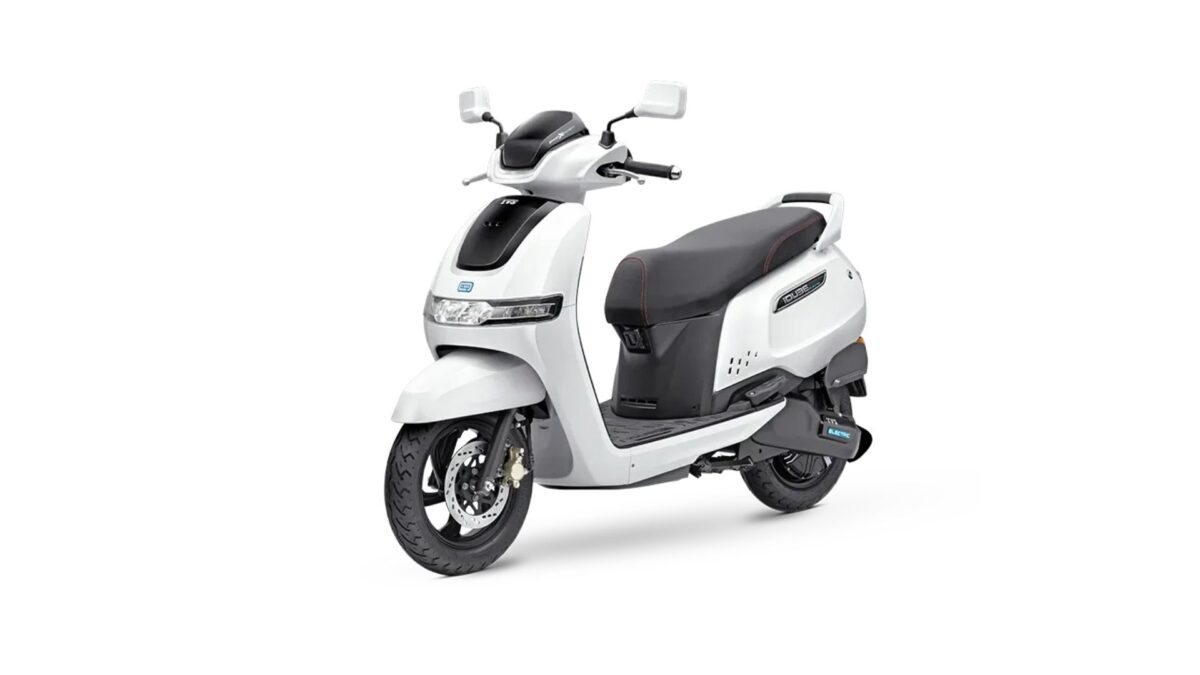
The TVS iQube stands out as a strong contender in the electric scooter market, particularly for its reputation for reliability and a well-established service network.
Official Specifications & Unique Features: The entry-level trim of the TVS iQube is priced at ₹94,434 (ex-showroom). It is powered by a 2.2 kWh battery pack, delivering 5.9 bhp and a peak torque of 140 Nm. The scooter accelerates from 0 to 40 kmph in 4.2 seconds and achieves a top speed of 75 kmph. Its claimed Indian Driving Cycle (IDC) range is 94 km. A notable advantage is its relatively quick charging time, reaching 0% to 80% in 2 hours and 45 minutes. Feature-wise, it is equipped with a 5-inch TFT display, offers a convenient reverse mode, and includes smart display functionalities.
Real-World Range Insights: TVS officially claims a range of 75 km for the iQube 2.2kWh variant. Autocar India’s real-world tests for this model indicated a range of 76.4 km in Eco mode (where speed is capped at 45 kph) and 59.1 km in Power mode (allowing speeds up to 75 kph). A separate review for the iQube S (also with a 2.2kWh battery) reported a real-world range of 100 km in Eco mode (at 45 kmph) and 70 km in Power mode (at 78 kmph). Some users have even reported achieving 100-120 km easily, depending on their driving style and the chosen ride mode , suggesting that efficient riding habits can significantly extend the practical range.
User Reviews: Reliability vs. Reported Issues: Users consistently praise the TVS iQube for its solid build quality, comfortable seat with ample space for a pillion, reliable Distance-to-Empty (DTE) predictions, and a suspension system that is well-tuned for city conditions. Positive feedback also highlights its excellent headlight setup, a braking system that does not cut off the motor, and minimal idle battery drain. Sales and service experiences are generally reported as positive, with users appreciating the wide footboard, sufficient storage space, and its proven reliability with few major issues. The scooter is frequently described as smooth, reliable, comfortable, and having good battery backup.
However, some users have pointed out specific areas for improvement. The regenerative braking system is sometimes perceived as overly aggressive, engaging immediately upon throttle release. There is also a reported delayed throttle response, which some users liken to “playing FPS at 200ms ping”. A concern for longer rides is the passively cooled BLDC hub motor, which can reportedly overheat after more than 20km, leading to a 10-15% reduction in performance and triggering a warning on the instrument cluster. The TVS iQube application is considered a “work in progress,” with advertised features like turn-by-turn navigation and phone notifications often not functioning due to connectivity issues. The app also requests numerous intrusive permissions and requires an annual fee after the first year. A common complaint is the absence of a fast-charging option. Minor design quirks include a flimsy charging port cover (which is notably not replaceable under warranty), visible panel gaps, black glossy plastics prone to scratches, an ineffective horn, and awkward USB port placement. Additionally, some users have reported issues with the side stand sensor giving false indications, causing the scooter to stall.
Service Network: TVS boasts an extensive service network, with over 4500 authorized service centers spread across 3800+ cities nationwide. This wide reach is supported by over 10,000 certified technicians and more than 30 years of customer care expertise. TVS offers convenient service booking through WhatsApp, provides live status updates, and includes service pick-up and drop facilities. They also offer Annual Maintenance Contracts (AMC) and 24×7 Road Side Assistance (RSA). The company provides a standard warranty of 3 years on both the battery and motor.
The TVS iQube presents a compelling option for buyers prioritizing a reliable and comfortable riding experience backed by a strong, established service network. While some users have noted specific issues related to riding dynamics, app functionality, and the lack of fast charging, the overall sentiment points to a well-built and dependable scooter, especially for urban commuting. The extensive dealership and service presence offers a significant advantage, addressing a key concern for many EV buyers in India.
3.3. Ola S1 X 3 kWh

The Ola S1 X 3 kWh is a step up from its 2 kWh sibling, offering enhanced performance within the sub-₹1 lakh category.
Official Specifications & Unique Features: Priced at ₹97,999 (ex-showroom) , the S1 X 3 kWh variant delivers a power output of 7.3 bhp. It accelerates from 0 to 40 kmph in a quick 3.1 seconds, making it slightly faster than the 2 kWh model. Its top speed is an impressive 115 kmph. The scooter is equipped with three ride modes: Eco, Normal, and Sports, providing versatility for different riding conditions. It features a 7-inch touchscreen display and includes a digital key for modern convenience.
Real-World Range Insights: While a specific IDC/ARAI range for the Ola S1 X 3 kWh was not explicitly detailed in the provided data, user feedback for the Ola S1 Pro Gen 3 (4 kWh battery) suggests that real-world ranges are typically about 30% less than claimed figures. Applying a similar observation, the 3 kWh variant’s real-world range in Eco mode could be estimated around 136 km. It is important to note that actual range can vary significantly based on riding style, terrain, and use of different ride modes.
User Reviews: The Good, The Bad, and The Glitches: User reviews for the Ola S1 X 3 kWh largely echo the sentiments for the 2 kWh model, particularly concerning software and service. Many users report persistent software glitches, including screen malfunctions and system unresponsiveness. The after-sales service continues to be a point of contention, with complaints about long resolution times and perceived unresponsiveness from service centers. Some users have also noted a drastic drop in battery range over time. A significant concern is the possibility that certain riding modes (like Sport/Hyper) or advanced features might be locked behind a subscription service or “TecPac” after an initial period. This could lead to unexpected additional ownership expenses and a reduction in functionality if not renewed. Mandatory services, costing around ₹1,752 total for three services, are also a new expense that some users, accustomed to free services, find frustrating.
Service Network: The service network for the Ola S1 X 3 kWh is the same as for the 2 kWh model, with Ola rapidly expanding its network of over 500 Ola Electric Stores and aiming to reach 1000 centers by December 2025. The company is also investing in training third-party mechanics and implementing AI-powered diagnostics and a “Quick Service Guarantee” to improve the service experience.
The Ola S1 X 3 kWh offers a compelling performance upgrade over its base model, particularly in terms of acceleration and top speed. However, prospective buyers should be aware that the reported challenges with software stability and after-sales service, which are common across the Ola S1 X series, may also apply to this variant. The potential for features to be tied to subscriptions or additional packs after purchase is another factor to consider, as it could impact the long-term cost of ownership and user experience.
3.4. Bajaj Chetak 2903
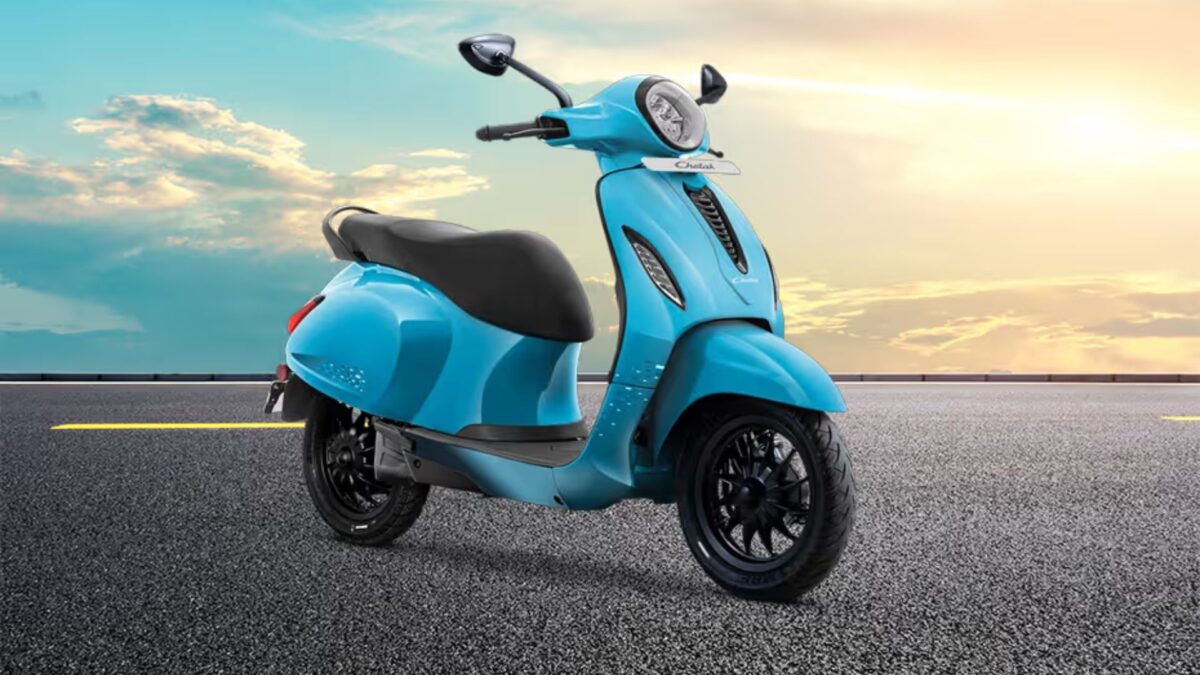
The Bajaj Chetak 2903 brings the iconic Chetak nameplate into the electric era, combining a classic design with modern electric technology.
Official Specifications & Unique Features: The Bajaj Chetak 2903 is priced at ₹98,498 (ex-showroom) , positioning it as a premium offering just under the ₹1 lakh mark. It is equipped with a 2.9 kWh battery and has a power output of 5.3 bhp. The scooter offers a claimed range of 123 km. It can charge from 0% to 80% in 4 hours. Key features include a hill hold assist, two ride modes (Eco and Sport), a colored LCD digital cluster, and Bluetooth connectivity for calls, notifications, and music. It also boasts a generous 211 liters of boot space.
Real-World Range Insights: While the official claimed range for the Chetak 2903 is 123 km , user reports on real-world range for the Bajaj Chetak generally vary. Some users have reported achieving around 120 to 140 km depending on riding style and traffic conditions. However, other user reviews mention ranges as low as 85-90 km or even 60 km , highlighting a significant discrepancy that can be influenced by factors such as riding mode, speed, and terrain. One user noted that even at 0% battery, their Chetak 2903 continued to run, allowing them to reach home.
User Reviews: Reliability vs. Reported Issues: The Bajaj Chetak is often praised for its durable metal body, comfortable seating, and stylish, instantly recognizable design that blends modern aesthetics with retro vibes. Users appreciate its suitability for city riding and its value proposition. It also offers good under-seat storage and comes with an onboard charger.
However, user reviews frequently express significant dissatisfaction with the after-sales service experience. Many users report that the service centers are unresponsive, take excessively long to resolve issues, and sometimes charge for problems that should be covered under warranty. Instances of vehicles being held at showrooms for months awaiting parts, such as defective onboard chargers or replacement batteries, are common. Users have reported battery failures within a few months of purchase, with some being asked to pay for replacements despite being within the warranty period. Software glitches and recurring bugs after service are also cited as problems. Some users find the suspension to be on the firmer side, leading to discomfort on bad roads. Other criticisms include limited under-seat storage that may not fit a full-face helmet, and the need for an additional “TecPac” for extra connectivity features.
Service Network: Bajaj maintains a network of authorized Chetak service stations across India. The company provides a warranty of 3 years or 50,000 km (whichever comes earlier) on the product and the Lithium-ion battery, with a condition that periodic maintenance services are performed at authorized service centers as per recommended schedules.
The Bajaj Chetak 2903 appeals with its iconic design, robust build, and a decent feature set for urban commuting. Its claimed range is competitive, though real-world performance can vary. The primary concern for potential buyers revolves around the reported inconsistencies and dissatisfaction with the after-sales service and battery-related issues, which appear to be a recurring theme in user feedback. While the brand carries a legacy of trust, the service experience is a critical factor that needs careful consideration.
3.5. Hero Vida V2 Lite

The Hero Vida V2 Lite aims to offer a practical and user-friendly electric scooter experience, notably featuring a removable battery.
Official Specifications & Unique Features: Priced at ₹74,000 (ex-showroom) , the Hero Vida V2 Lite is equipped with a 2.2 kWh removable battery. This feature allows users to detach the battery for charging at home or work, offering significant convenience. The scooter has an Indian Driving Cycle (IDC) range of 94 km. It accelerates from 0 to 40 kmph in 4.2 seconds and has a top speed of 69 kmph. The V2 Lite features a 7-inch TFT digital instrument cluster and offers two ride modes: Eco and Sport. It also provides a practical 26-liter boot space. Charging from 0% to 80% takes 3 hours and 30 minutes.
Real-World Range Insights: While the official IDC range for the Vida V2 Lite is 94 km , it is generally expected that real-world range will be lower, with estimates suggesting a ~15% drop in stop-and-go traffic. User experiences for other Vida V2 variants (like V1 Plus and V2 Plus) indicate real-world ranges varying from 60-70 km (for V1 Plus, despite a 100 km promise) to 85-95 km (for V2 Plus, with or without a pillion). One user even reported 127 km on a full charge for a V2, though this appears to be an outlier. A YouTube review for Vida V2 indicated a real-world range of 64 km. These variations highlight the importance of considering individual riding conditions and habits when assessing range.
User Reviews: Reliability vs. Reported Issues: Users appreciate the Vida V2 Lite’s fresh design, the trust associated with the Hero brand, and the significant advantage of its removable battery. The scooter is often praised for its comfort, smooth ride, and suitability for daily commutes.
However, several common issues have been reported. A major point of contention is the discrepancy between claimed and real-world range, with many users experiencing significantly lower actual mileage. Charging issues are also prevalent, including the start button not working in rain, fast charging not being supported at listed stations on the app, and a perception that less than 50% of fast charging stations actually work. Design flaws include a lack of a convenient place to keep a mobile phone while charging and, notably, water filling the storage compartment after only 5 minutes of rain. Some users have reported poor after-sales support and negative dealership experiences, including unhelpful staff and issues with key replacement and charging lock functionality.
Service Network: Hero Vida offers a comprehensive service network, including 3 free services (labor only) within the first 12 months or 15,000 km. They also provide 24/7 Road Side Assistance (RSA) for the first 12 months, covering on-site repairs, towing services (up to 50 km), battery assistance (towing to charging station), flat tyre support, and lost key help. Vida is actively expanding its fast-charging network and aims for 100+ cities to have community chargers by 2025. They have over 265 service centers across 160 cities in India.
The Hero Vida V2 Lite’s removable battery offers a distinct advantage in terms of charging flexibility, appealing to users who may not have dedicated charging points. However, the recurring complaints about range discrepancies, charging infrastructure reliability, and after-sales service suggest that while the product has innovative features, the overall ownership experience can be inconsistent. Potential buyers should weigh the convenience of the removable battery against these reported challenges.
Conclusion
The Indian electric scooter market under ₹1 lakh in July 2025 presents a compelling but complex landscape for buyers. The transition from FAME-II to EMPS 2024, with its reduced flat subsidy and limited duration, signals a strategic shift from direct purchase incentives to a focus on building a robust EV ecosystem through charging infrastructure and domestic manufacturing. This means that while central government support is still available, its immediate impact on affordability is less pronounced than in previous years. Consequently, state-level policies, which offer additional benefits like road tax exemptions and toll waivers, become crucial differentiators in the overall cost of ownership. Buyers are encouraged to thoroughly research state-specific incentives to maximize their financial advantages.
The analysis of the top 5 electric scooters in this segment reveals a competitive environment where manufacturers are striving to balance affordability with performance and features. However, a consistent theme across several brands is the disparity between claimed and real-world ranges, as well as significant concerns regarding after-sales service and software reliability.
- Ola Electric models (S1 X 2 kWh and 3 kWh) offer impressive specifications and a tech-forward approach at attractive price points. However, user experiences frequently highlight challenges with software glitches, inconsistent performance, and a widely criticized after-sales service network. The non-eligibility of the 2 kWh model for extended battery warranties also introduces a long-term risk. Ola represents a high-potential, high-risk proposition where innovation sometimes outpaces execution.
- The TVS iQube stands out for its solid build quality, comfortable ride, and a generally positive service experience backed by an extensive network. While it may not boast the highest top speeds or the most aggressive acceleration, its reliability and practical features make it a strong all-rounder. Users have noted minor issues with aggressive regenerative braking, delayed throttle response, and the absence of fast charging, but overall sentiment points to a dependable choice.
- The Bajaj Chetak 2903 appeals with its iconic design, durable metal body, and a respectable claimed range. However, like Ola, it faces significant user dissatisfaction concerning after-sales service, battery-related issues, and a firm suspension that can be uncomfortable on uneven roads. Its premium positioning within the sub-₹1 lakh segment comes with the expectation of a seamless ownership experience, which some users report is not consistently met.
- The Hero Vida V2 Lite differentiates itself with a convenient removable battery, offering flexibility in charging. It provides a decent set of features at a competitive price. Nevertheless, user feedback points to discrepancies in real-world range, issues with charging infrastructure functionality, and design flaws like water seepage into storage. After-sales support also appears to be a recurring concern for some users.
In conclusion, while the sub-₹1 lakh electric scooter market in India offers diverse options, prospective buyers must look beyond initial price tags and claimed specifications. A thorough evaluation should include understanding the nuanced subsidy landscape (both central and state), critically assessing real-world range expectations, and, most importantly, scrutinizing user reviews for insights into long-term reliability and the crucial after-sales service experience. The journey towards electric mobility is accelerating, and choosing the right scooter involves a careful balance of upfront cost, practical performance, and dependable support.
FAQ Section
Q1: What is the current government subsidy for electric scooters in India in July 2025?
A1: In July 2025, the FAME-II subsidy has ended. Electric two-wheelers are now eligible for a flat subsidy of ₹10,000 per vehicle under the Electric Mobility Promotion Scheme (EMPS) 2024. This scheme has been extended until September 30, 2024.
Q2: How do I claim the EMPS 2024 subsidy when buying an electric scooter?
A2: Unlike the previous FAME-II scheme, you do not need to submit a separate claim form. The ₹10,000 subsidy is provided directly to the manufacturers and is automatically deducted from the purchase price at the dealership. Ensure the OEM is certified by the Ministry of Heavy Industries.
Q3: What is the difference between IDC/ARAI range and real-world range for electric scooters?
A3: IDC (Indian Driving Cycle) and ARAI (Automotive Research Association of India) ranges are standardized test figures measured under ideal conditions. Real-world range, however, is the actual distance a scooter can cover in everyday riding, which is typically lower than claimed figures due to factors like traffic, riding style, terrain, and use of different ride modes. Expect a 15-30% drop from claimed IDC/ARAI figures.
Q4: Are there any state-specific subsidies available in addition to the central EMPS 2024?
A4: Yes, several state governments continue to offer their own EV policies and incentives. For example, Maharashtra’s EV Policy 2025 provides benefits like road tax and registration fee exemptions, and even toll-free travel on select expressways for EVs. It is advisable to check the specific policies in your state of purchase.
Q5: What are the common challenges or issues reported by users of electric scooters under ₹1 lakh?
A5: Common issues reported by users include discrepancies between claimed and real-world range, software glitches (e.g., screen freezing, connectivity issues), poor after-sales service experience (long resolution times, unresponsiveness), and occasional quality control issues. Some models also face challenges with charging infrastructure availability or design flaws like water seepage.
Q6: How much does it cost to replace an electric scooter battery, and what is the warranty?
A6: Battery replacement costs can range from ₹15,000 to ₹35,000 or more, depending on the brand and kWh size. Most manufacturers offer a standard battery warranty of 3 years or 30,000-50,000 km, whichever comes earlier. Some brands offer extended warranty options, but not all models are eligible.
Q7: Do I need a driving license to ride these electric scooters?
A7: Yes, for most electric scooters in this list, which have motor outputs beyond low-speed categories, a valid driving license is absolutely required for legal operation on public roads.
